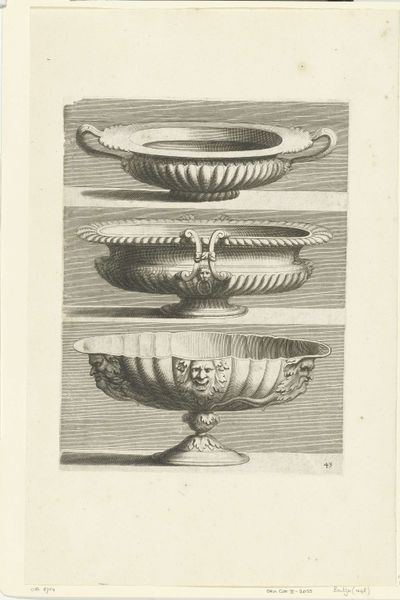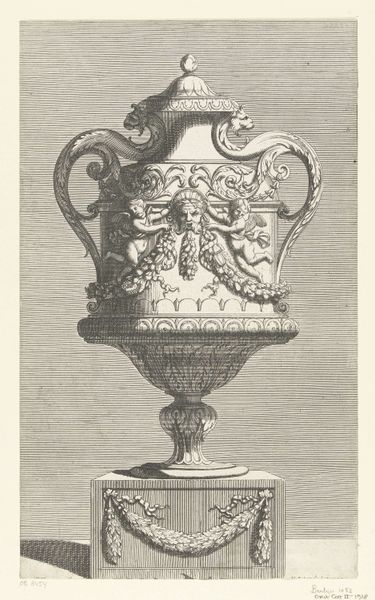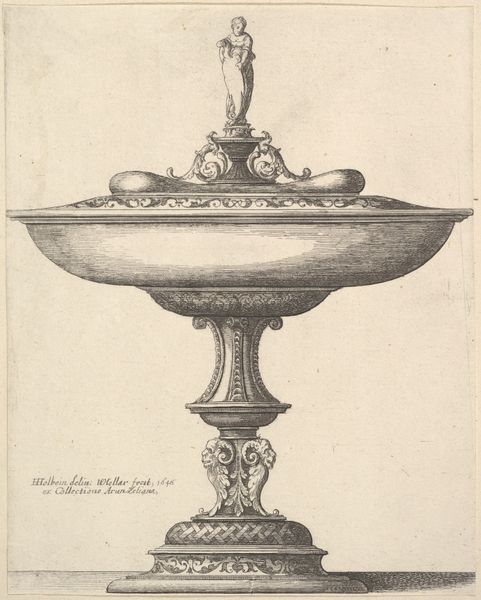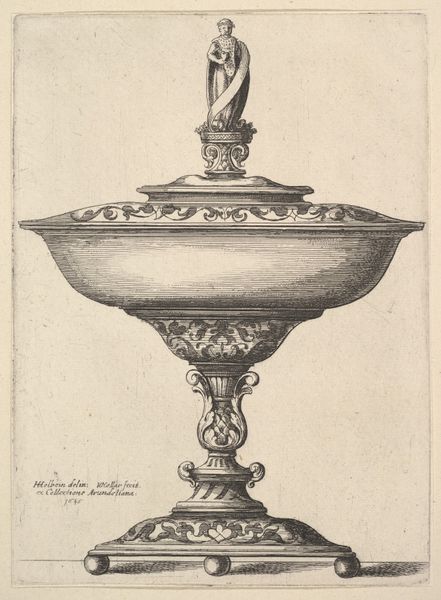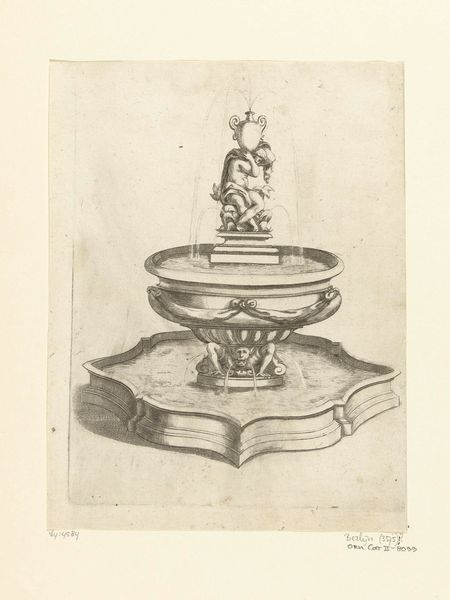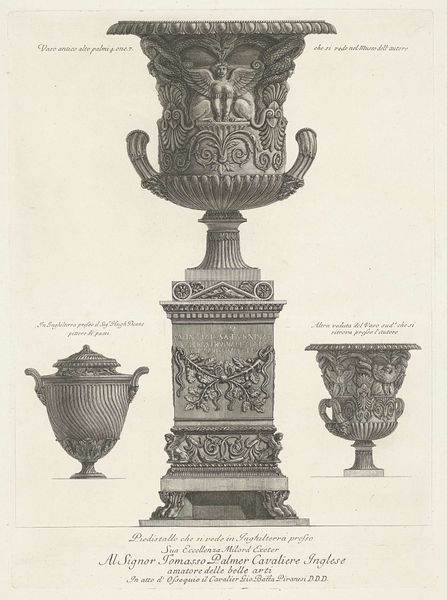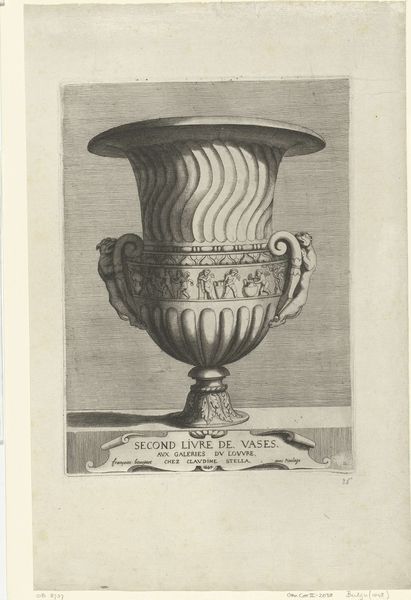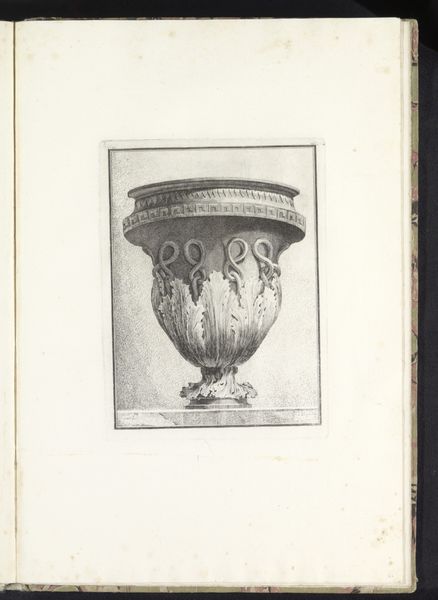
print, metal, engraving
#
baroque
# print
#
metal
#
engraving
Dimensions: height 258 mm, width 204 mm
Copyright: Rijks Museum: Open Domain
Editor: So, this engraving from 1667, called "Twee schalen" or "Two Bowls," is by Françoise Bouzonnet. I'm struck by the almost fantastical quality of the designs, especially those strange, leonine figures holding up the top bowl. What’s your take on it? Curator: It's interesting that you describe them as fantastical. Prints like these, especially during the Baroque period, played a crucial role in disseminating designs and influencing taste. How do you think an engraving of ornate metalwork would have functioned in 17th-century society? Editor: Well, since not everyone could afford elaborate metal pieces like these bowls, maybe engravings like this helped spread ideas about current styles. Did they sort of democratize access to fancy designs? Curator: Exactly! These weren’t just decorative images. They were often used as models for craftsmen, inspiring new interpretations of existing styles. Think about how design ideas traveled before mass media—engravings were a powerful visual language, establishing trends across geographical and social boundaries. The fact that the top bowl rests on these sea monster figures points to that same language; an expression of wealth and power. It would be exclusive by being aspirational, as engravings made such expressions and style popular in wider circles. Editor: That makes a lot of sense! It is a peek into a world that would otherwise be unavailable. The prevalence of imagery makes it a powerful source for influencing preferences. Now, looking closely, do you think this artwork would have promoted certain social values? Curator: Certainly. The detailed rendering emphasizes luxury, skill, and artistry. Such emphasis can suggest a society that values refinement and craftsmanship, perhaps even justifying social hierarchies through the demonstration of elite taste. What has resonated most with you about this piece? Editor: I now appreciate the importance of art outside its direct display—it communicates meaning even through secondary reproduction and informs taste more broadly! Curator: Precisely, and this work proves the print's potential impact on a far wider audience. It’s a powerful reminder of the vital role prints played in the history of design and dissemination of culture.
Comments
No comments
Be the first to comment and join the conversation on the ultimate creative platform.

